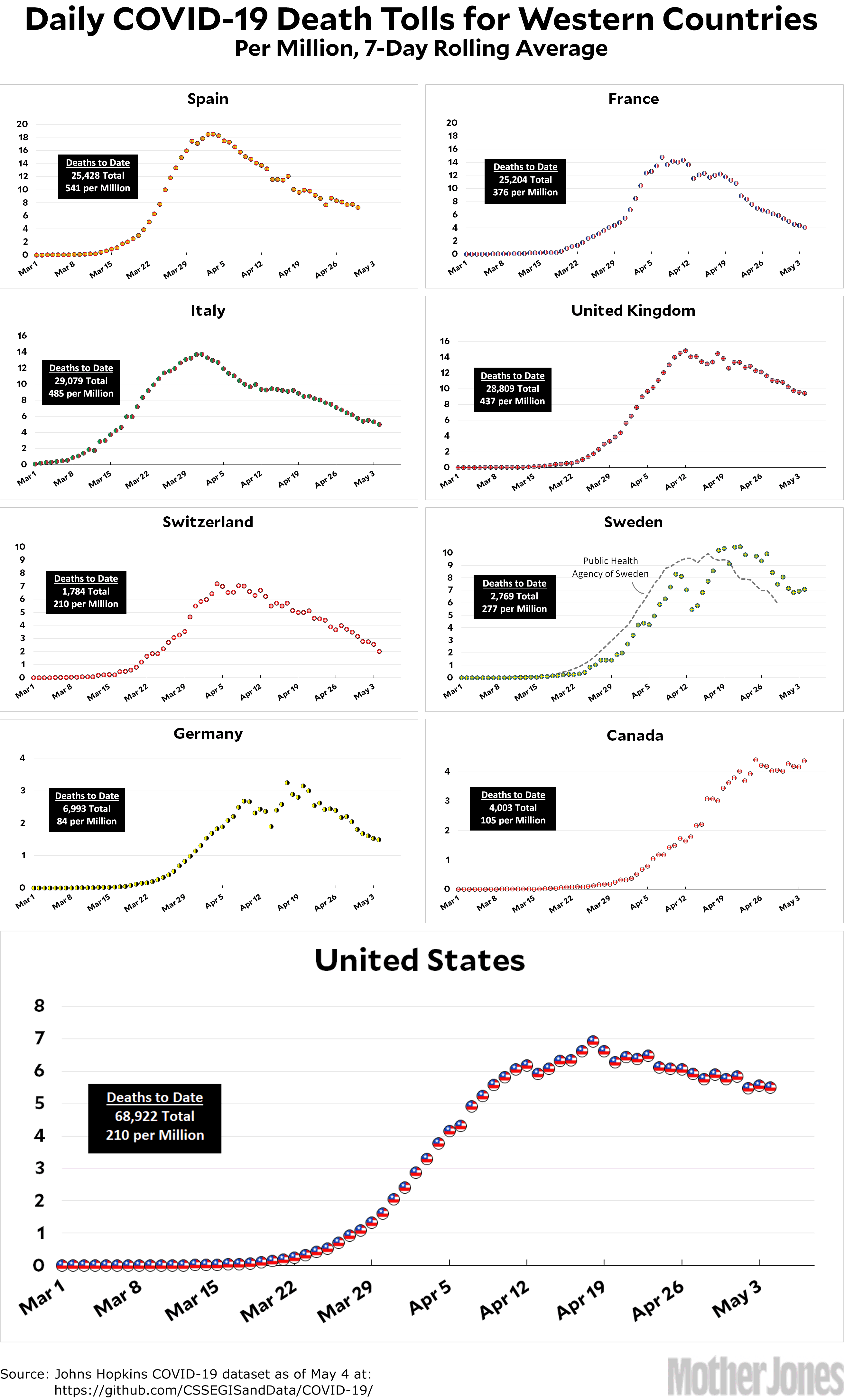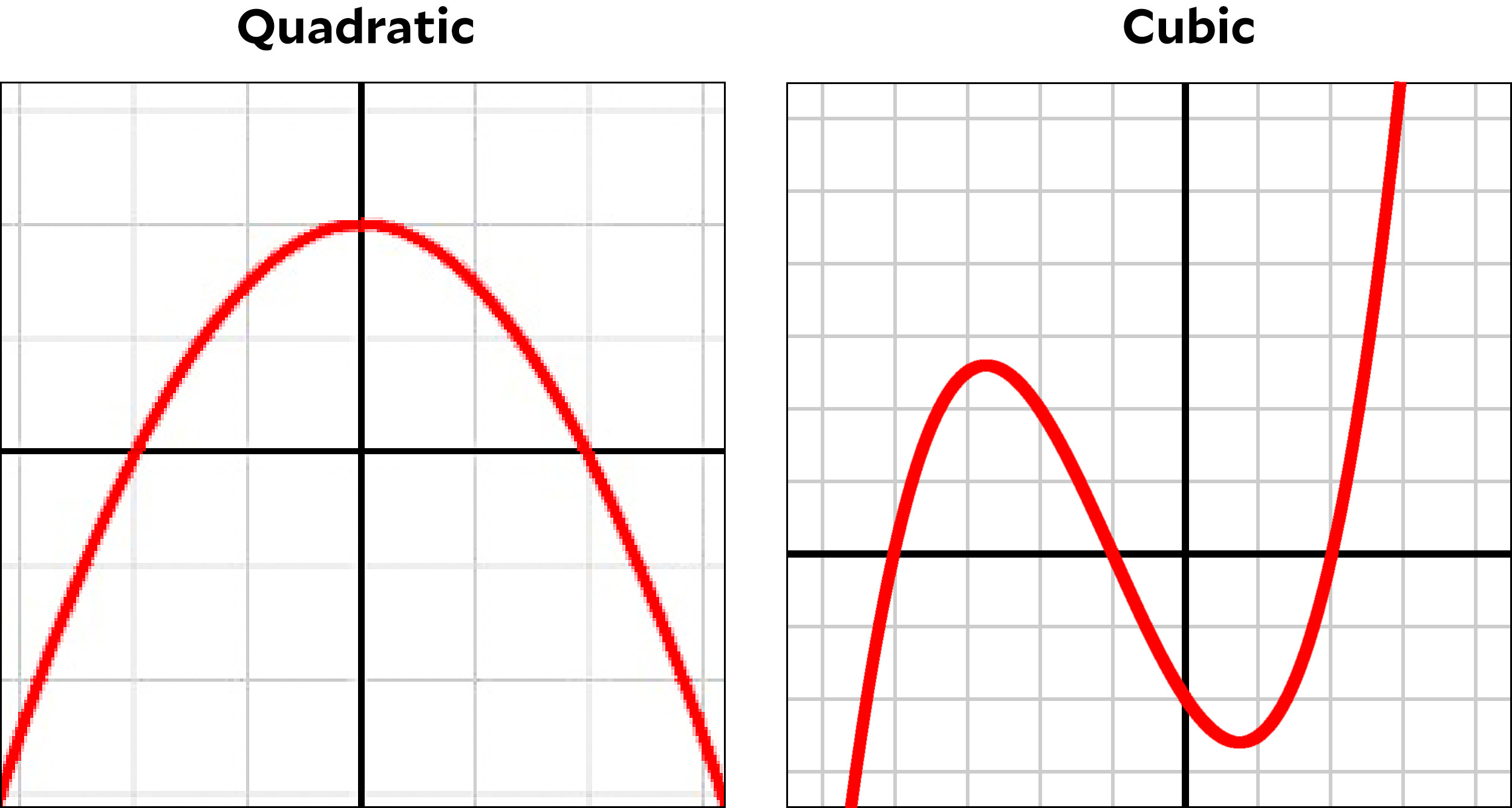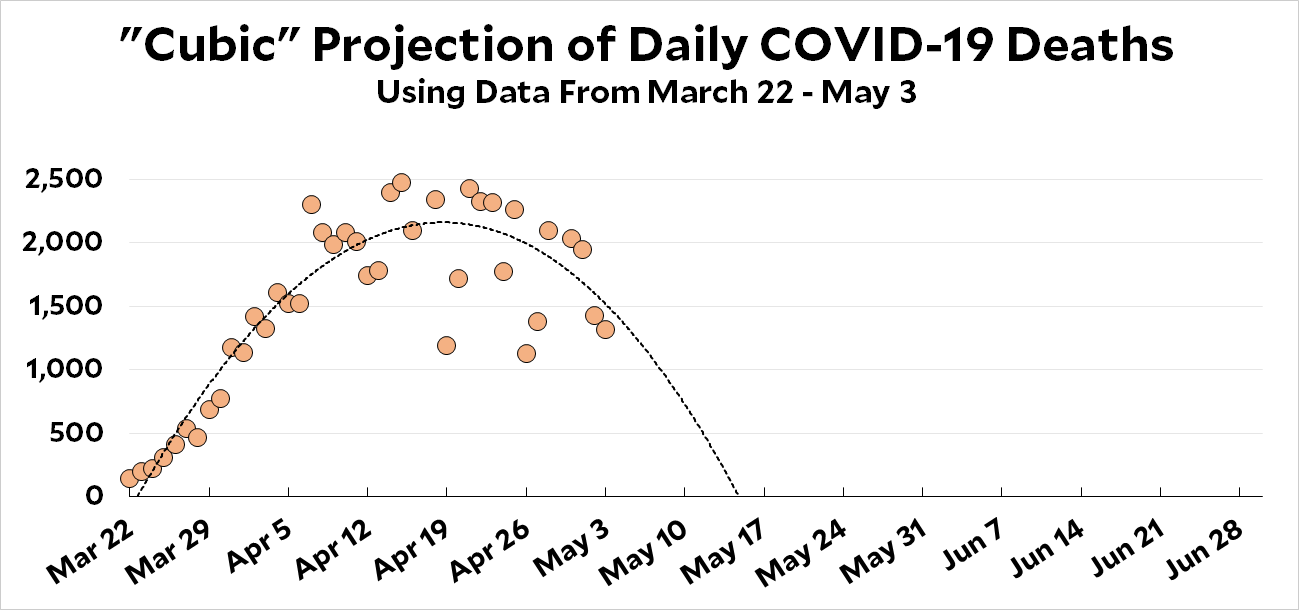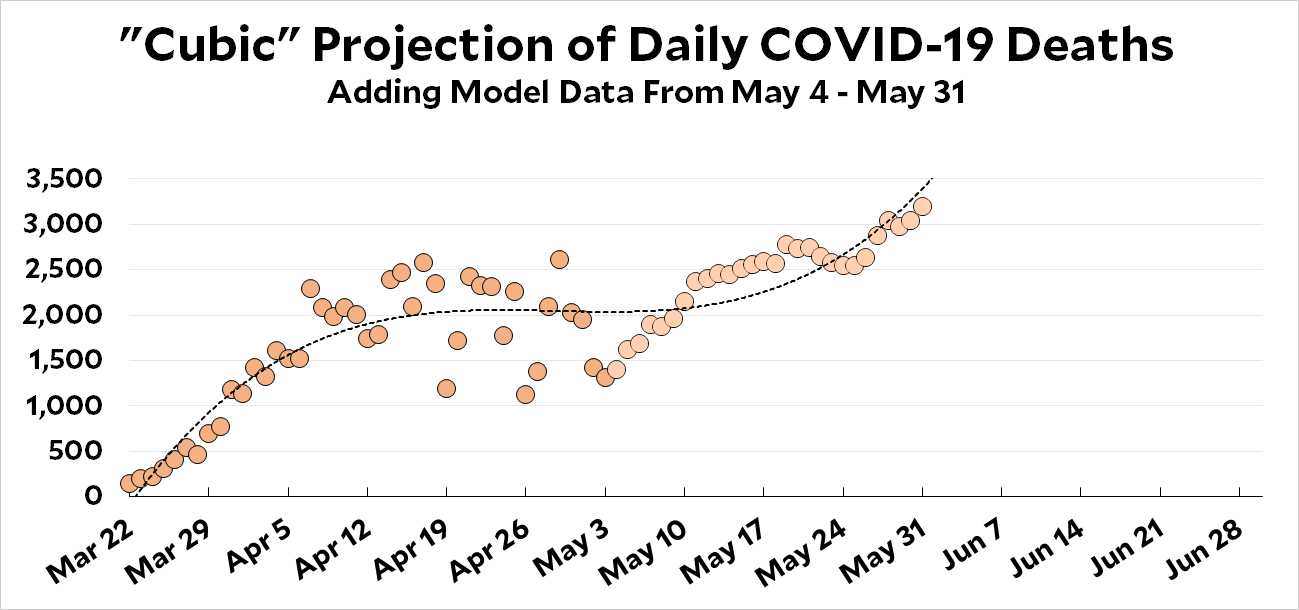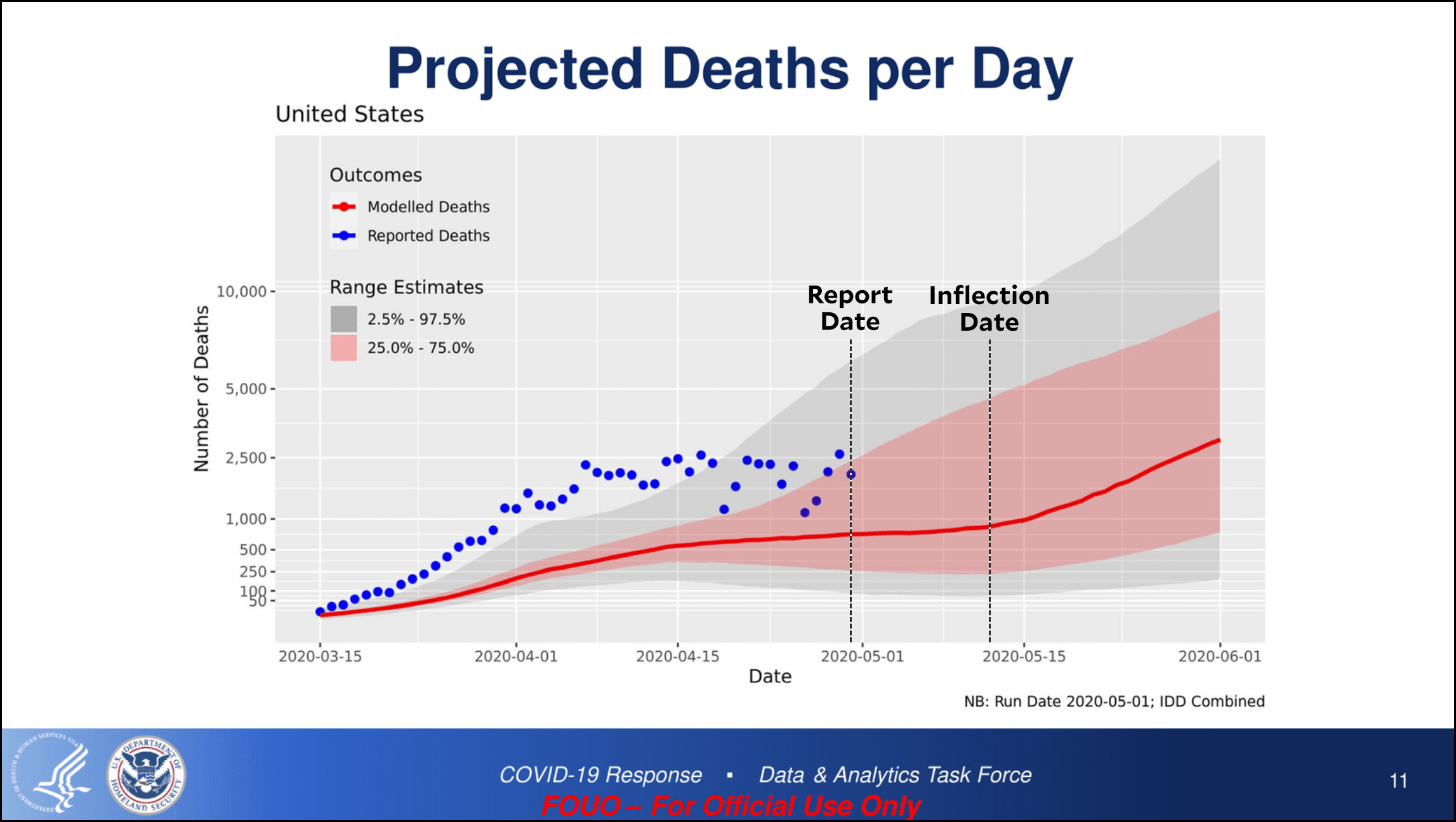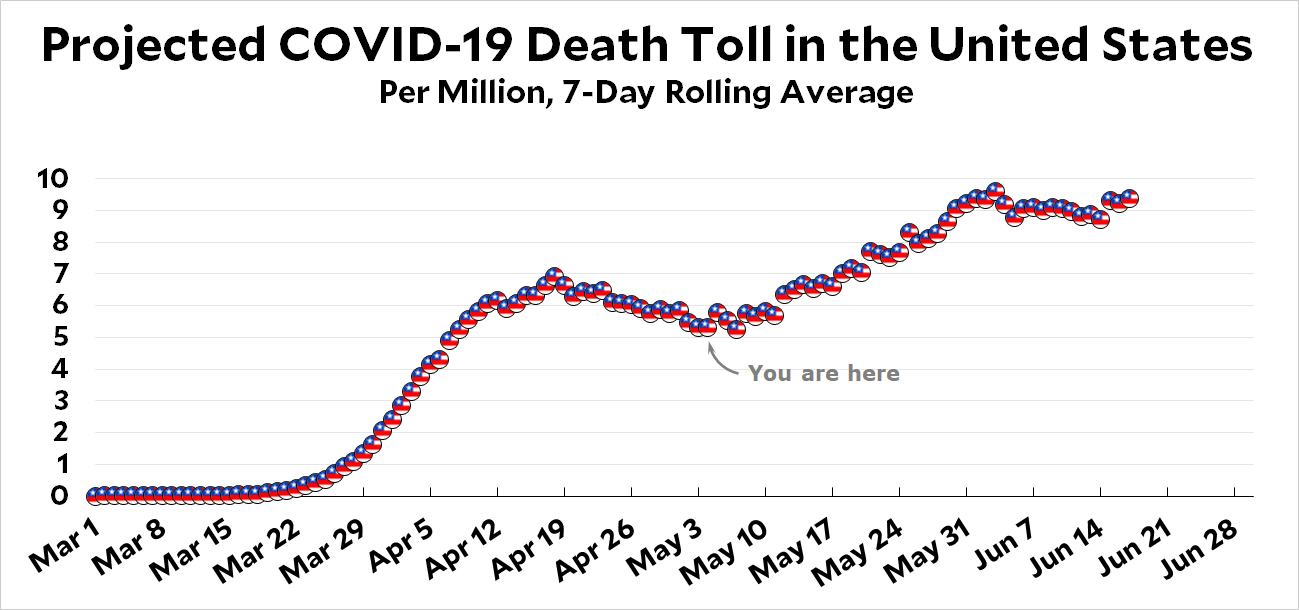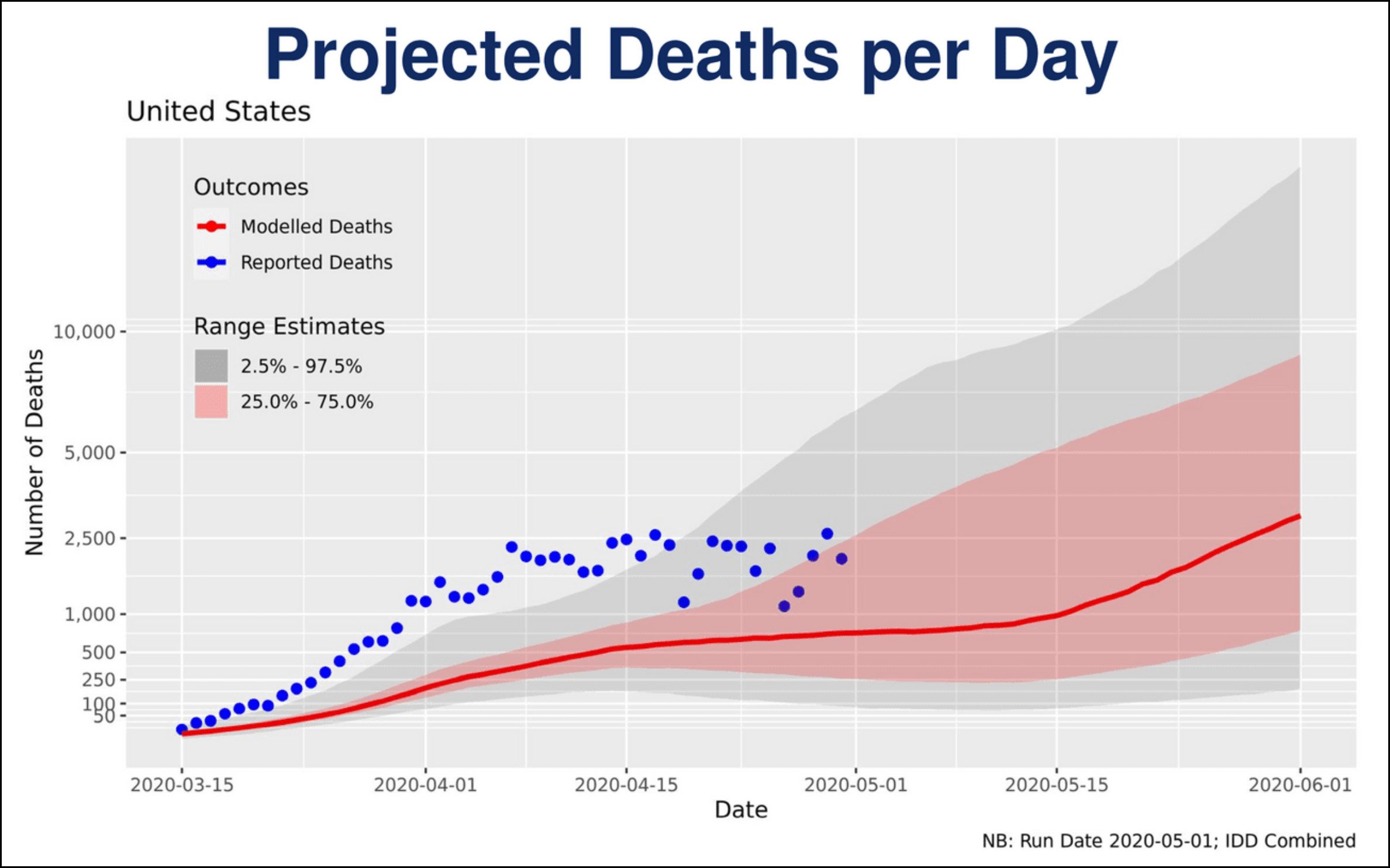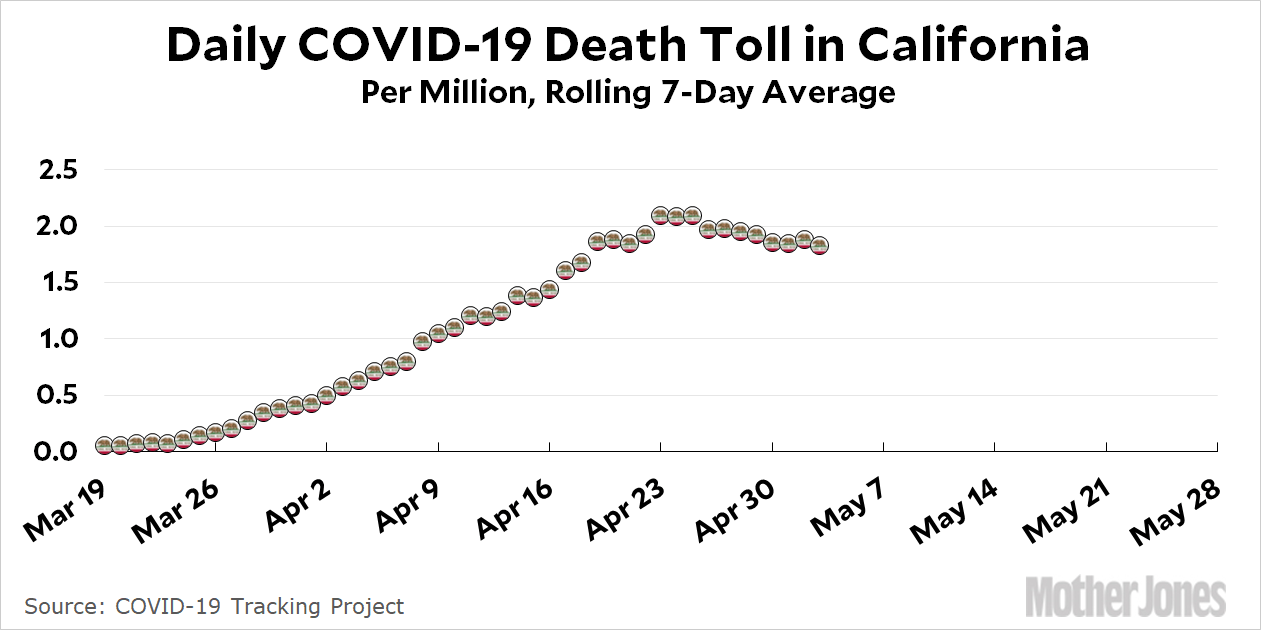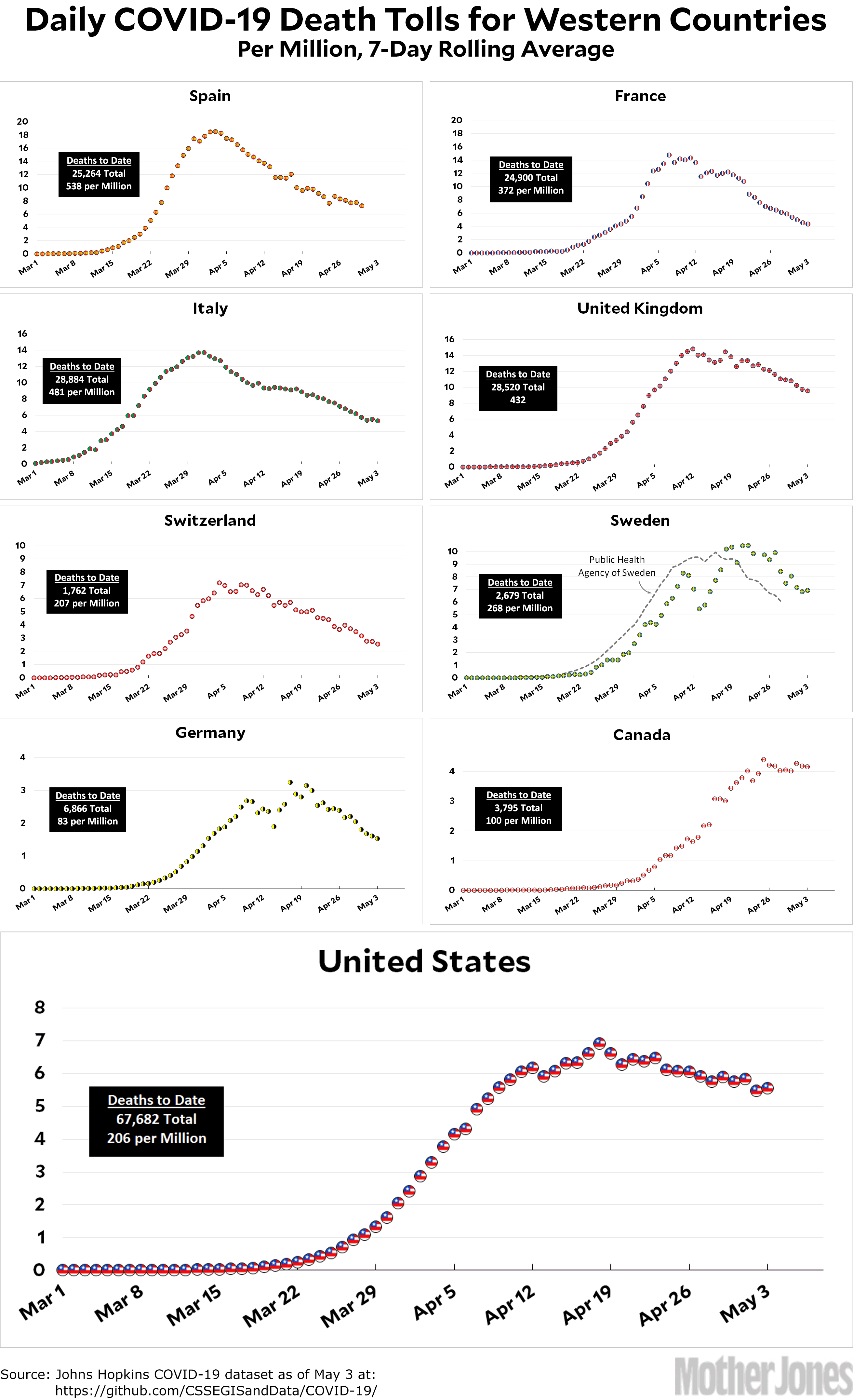This is a little down in the weeds, but you might not have heard about it before. A new mutation of the coronavirus appeared in Europe back in February and has quickly become the dominant strain nearly everywhere in the world. Here are the official—but incomprehensible—pretty charts from the paper describing the new strain:
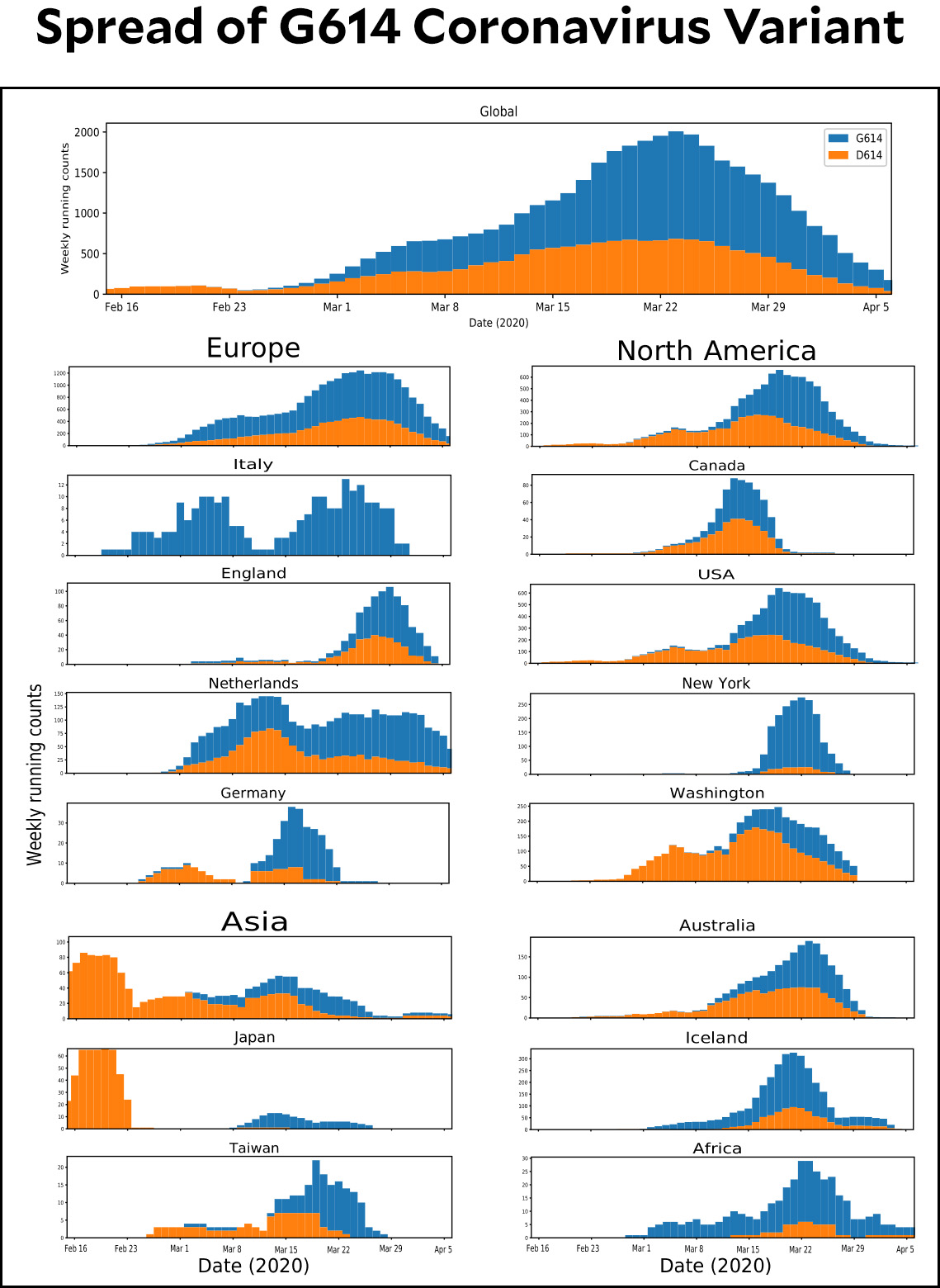
Wait. Weekly running count of what? And why are the counts decreasing? And if they’re weekly, why are the bars daily?
I have hunted through the paper for an explanation but basically come up dry. As near as I can tell, the answers are:
- It’s a running count of the samples submitted to GISAID, the Global Initiative on Sharing All Influenza Data.
- They have lots of submissions from mid-March but not yet very many from April.
- The bars are daily because . . . um, I don’t know. But if you add up the bars that fall on a weekly date, you’ll get about the same number as the cumulative chart in the supplementary materials. So those are really the only bars that matter.
What this adds up to is simple: the absolute numbers don’t really mean anything. For our purposes, the most useful chart is a weekly presentation of the percentage of the G614 strain. So here that is:
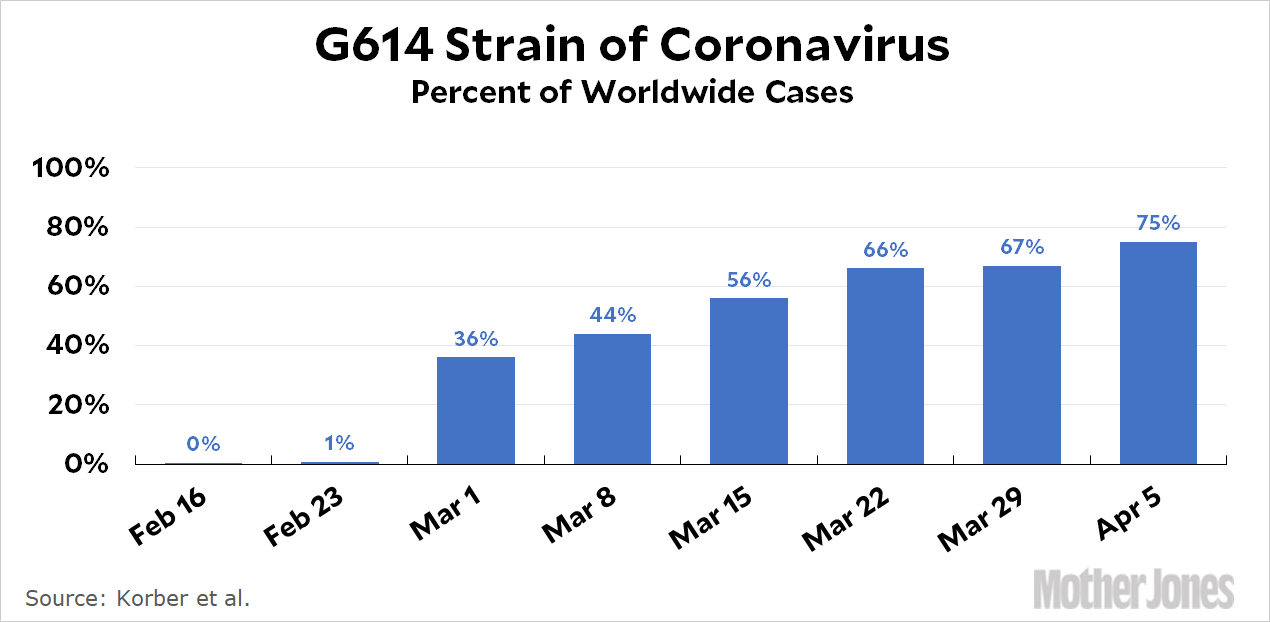
As I’ve said before, projections of COVID-19 deaths mainly depend on estimates of how good each country’s (or state’s) countermeasures are and how many people comply with them. But mutations of the coronavirus matter too. This one isn’t hugely more dangerous than the original strain, but it’s a little more deadly.

